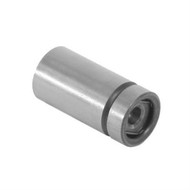The Case Against Soaking Lifters
Published by Steve Koch, Northern Auto Parts on Apr 25th 2024
While soaking lifters has its supporters, there is a flip side to the coin, with some arguing against the practice. The argument against soaking lifters is one grounded in modern engine design and manufacturing.
Opponents of soaking point out that today's hydraulic lifters are often designed to operate efficiently without the need for pre-soaking. With improvements in materials and manufacturing processes, the risk of air pockets causing significant issues has diminished. These lifters are ready to perform straight out of the box, with the engine's oil system quickly filling any voids once the engine starts.
There's also the reason of practicality. Soaking lifters requires forethought and additional time, which might not be necessary for newer engines or lifters designed with self-priming features. Also, improperly soaked lifters, including those left in oil for too long or soaked in contaminated oil, could introduce engine issues, like over-saturation, that affect their ability to adjust rapidly to engine conditions.
The stance against soaking lifters suggests that with modern engines and lifters, the benefits of soaking might not outweigh the simplicity and efficiency of installation without this extra step. It's a perspective that values the advancements in automotive technology, advocating for a more straightforward approach to engine assembly and maintenance.
Choose the Right Oil
Use the same oil you plan to run in the engine for soaking. That way you can be sure of compatibility and any potential issues from mixing different types of oil are prevented. Today’s engine oils do not contain many of the additives of old. Zinc/Phosphorus has been removed from many of the brand names. These components are necessary for the flat tappets that we’re speaking about here. It is 100% necessary to add a break-in additive to your routine.
Post-Installation Care
After the lifters are in and the engine is assembled, prime the oil system before the first start. This helps guarantee that oil pressure is built up properly, offering additional protection to the lifters and other critical engine components.
Break In Springs
Many manufacturers recommend to use break -in springs. These are valve springs that are very weak with light spring pressures. The break in period with these springs may be a little longer, possibly running the engine for 40 minutes at approximately 2000 rpm. Never break in a camshaft at idle speed!
When it's time to gather the parts for your next project or maintenance, Northern Auto Parts is ready to help you. We have an extensive inventory of parts for a wide range of makes and models. Finding the right lifter or engine kit is just a click away. We’ve honed our expertise over 40 years, meaning you're not just getting parts; you're getting a partner dedicated to helping you keep your engine in prime condition. So, take the next step and explore what we have to offer. Your engine, and your future road adventures, deserve nothing less.

